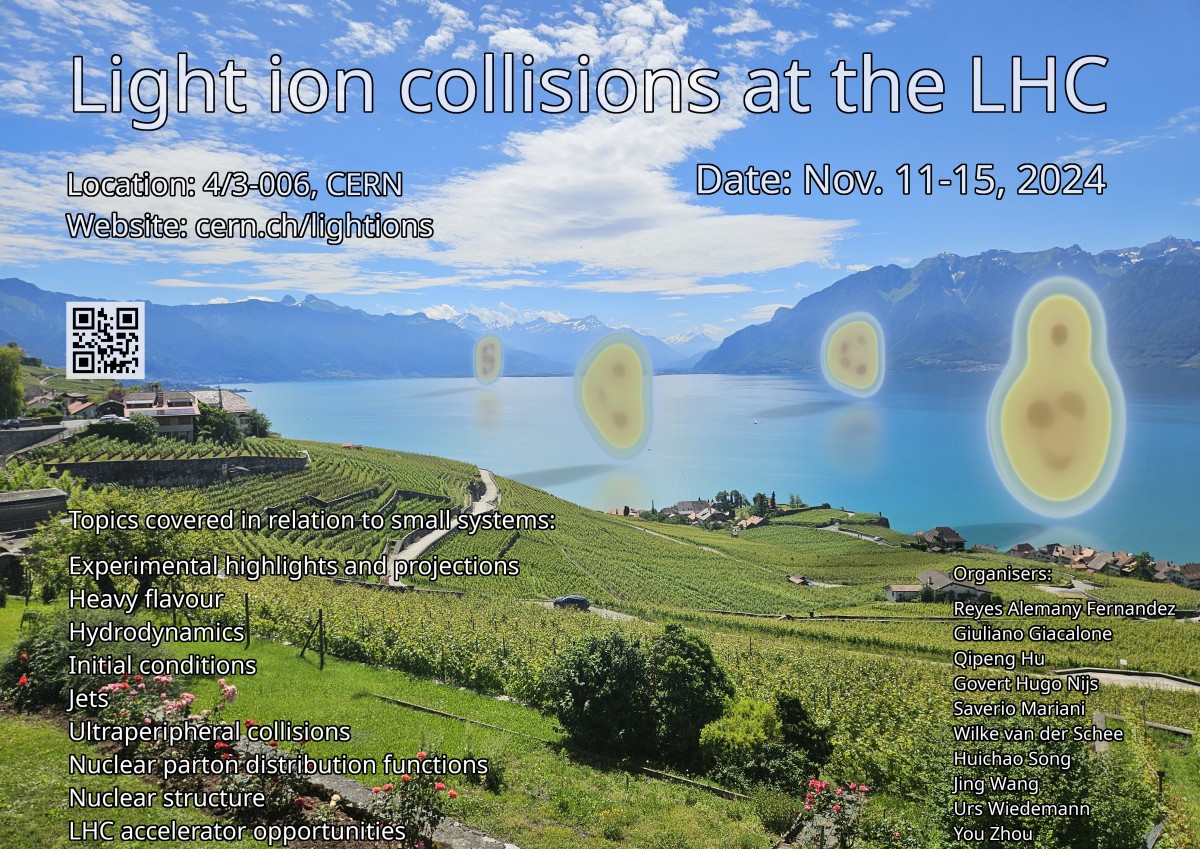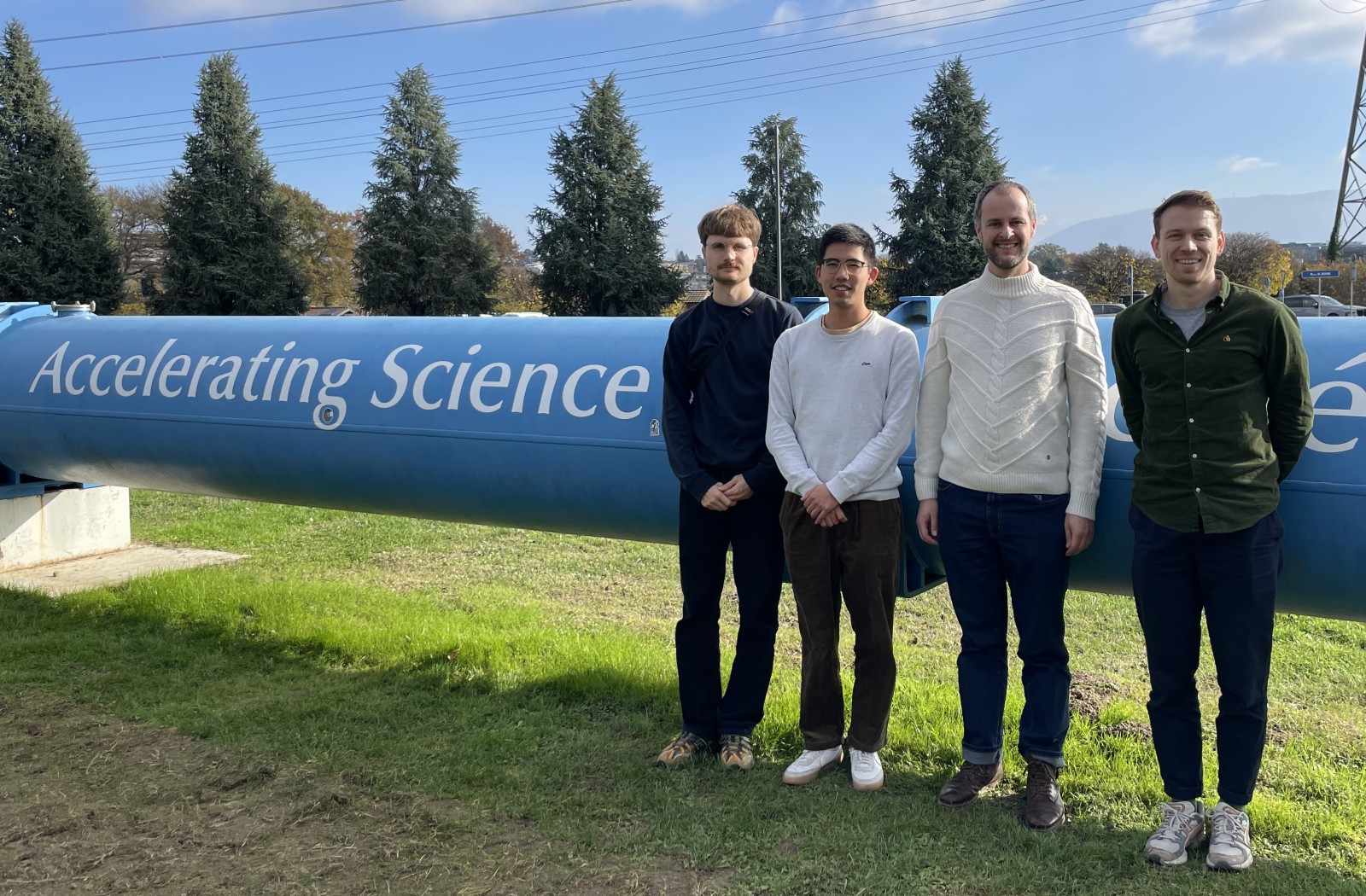Light ion workshop at CERN

November 11-15, 2024, my group (Adam, Fabian, and Jannis) and I attended the CERN TH workshop on Light ion collisions. It was a very exciting week of the latest predictions and perspectives of light ion collisions at the LHC. A couple of years ago, I co-organized a similar workshop on opportunities of oxygen-oxygen and proton-oxygen runs at the LHC. According to the latest scheduling, the exciting 1-week program will take place in summer 2025. Just in time for the workshop, we published Jannis’s master’s work on no-quenching baseline calculations for minimum bias oxygen-oxygen collisions (Gebhard et al., 2024). We showed that nuclear parton distribution functions are one of the dominant limiting factors in ascertaining small energy loss signals. However, we showed that in some kinematic range the semi-inclusive observables jet-triggered hadron measurements can achieve a percent level of accuracy.
Since the previous workshop, new physics opportunities with light ions have been discovered. In particular, comparisons of oxygen-oxygen and neon-neon collisions would test ab initio computations of nuclear structure. To put it simply, the ion collisions at the LHC can be used to make detailed images of nuclei. This new and exciting development is bringing together high-energy and low-energy nuclear physicists. We heard interesting talks about the latest first-principles computations of light ion nuclear structure. LHC accelerator complex is fully capable of delivering neon (and potentially other ion) beams, but no neon-neon collisions are currently planned in Run 3. However, it is important to be prepared since even a short opportunistic run neon-neon would bring qualitatively new knowledge.
On a personal level, it was nice to meet many of my colleagues and friends. It was also a first time visit for my PhD students (Fabian and Jannis) at CERN. I hope they were inspired by the visit and keen on accelerating science (see group photo below).

References
2024
Enjoy Reading This Article?
Here are some more articles you might like to read next:
